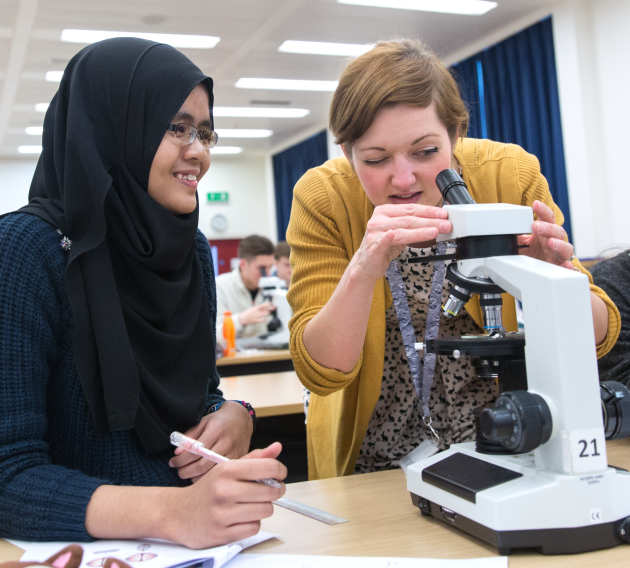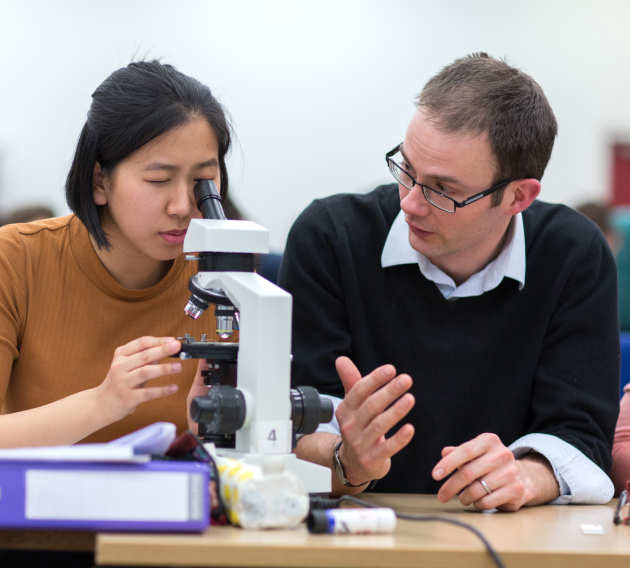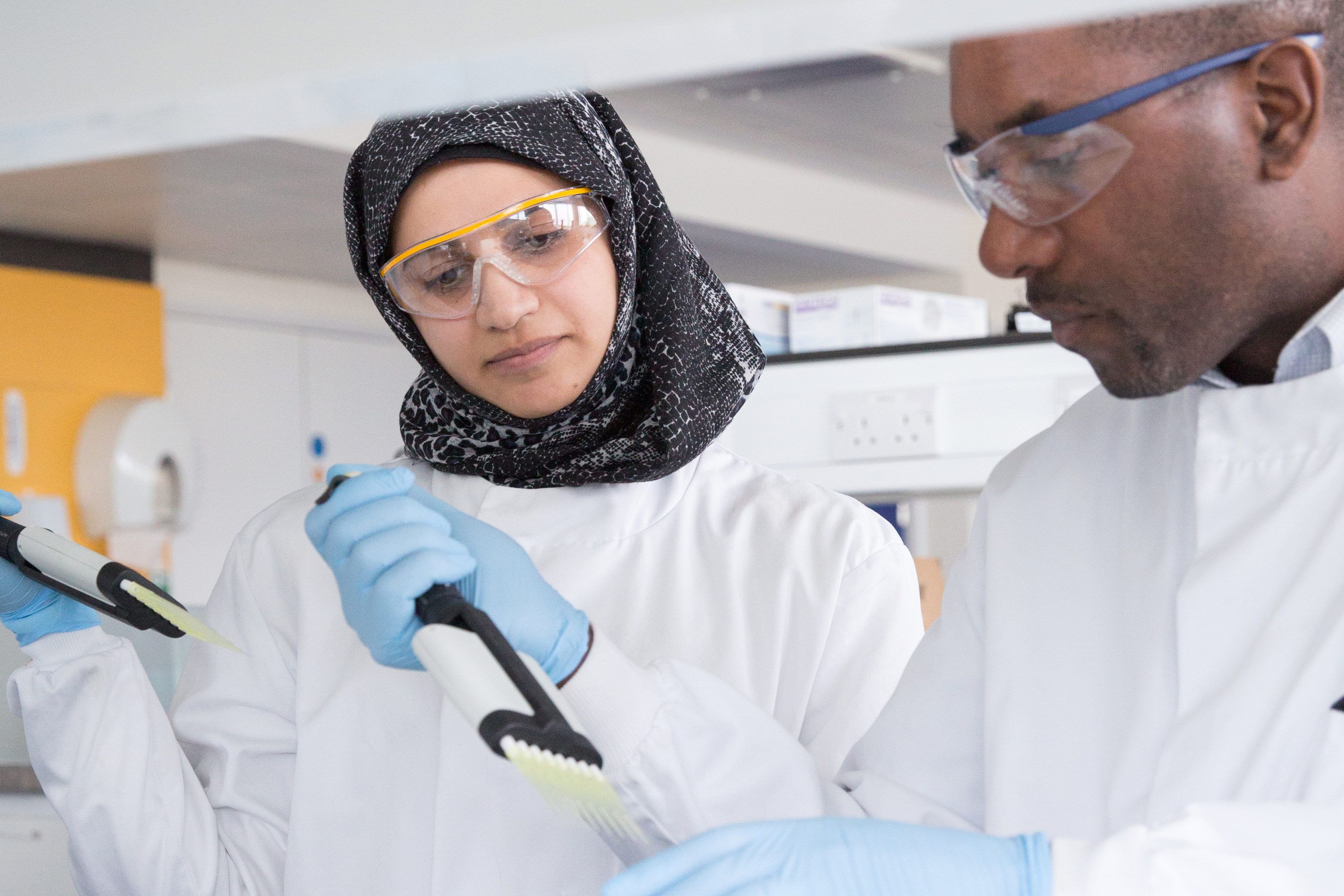 “The basic way we study rocks has remained pretty much unchanged for 100 years,” says Dr Emma Passmore.
“The basic way we study rocks has remained pretty much unchanged for 100 years,” says Dr Emma Passmore.
“Up until very recently, the way we taught this subject was also unchanged for perhaps 50 years,” Dr Mike Streule adds.
Dr Passmore and Dr Streule teach undergraduate geology, concentrating on the microscopic structure of rocks and what that says about the large-scale processes that created them.
Dr Passmore teaches first years: “Typically I’m working with a class of 40 students, helping them understand how to use a microscope to examine and identify tiny slivers of rock.”
Dr Passmore says she is spending progressively less and less time lecturing and aiming to make lectures more meaningful and interactive: “For instance, I couple my explanations with showing real-life examples using my microscope, which is hooked up to a camera and projector.”
Student comment
“I really enjoyed this course despite the content being quite tricky. Emma was great, and the lectures and notes were very clear at guiding us through. The practicals were well laid out and followed nicely from the lectures. It was also really useful when she used the camera to show us through the microscope on the screen.”
The lectures currently take up around a third of a teaching session. They take place in a lab where students have their own microscopes and they can experience key practical skills, minerals and textures as they are demonstrated. The rest of the session is dedicated purely to practical work, where students get more opportunities to put the ideas they have learnt into practice. Dr Passmore adds: “By using the microscopes in lectures, as well as in labs, I can pair the knowledge with the hands-on skills.”
Students also watch Dr Passmore’s custom-made ‘how-to’ videos prior to the classes, which introduce the practical skills they will try out in the lab, reducing the length of the lectures.
“It’s a constant drive towards active learning, minimising time spent talking through ‘things on slides’. I’ve been doing this for five years now and I’m confident that it’s working. Scores and feedback from students are always good. But more importantly, my students are comfortable to approach me and ask questions to check their understanding.”
Dr Streule picks up where Dr Passmore leaves off, teaching second year geology students, including a field trip to the Scottish Highlands. “The field trip comes towards the end of the second year, which is a pivotal time for students. During these two weeks, they get to see how rocks were formed in these mountains. By now they are using microscopes to good effect in the lab, and this is a chance for them to link the microscope work with the real-world processes.”
 On the trip, students operate in pairs or small groups on geological mapping of areas up to eight square kilometres. Dr Streule says this group work is good preparation for the future: “Social learning begins in the practical lab, but in field work it becomes extremely valuable. When our students graduate and go to work in industry, they will collaborate in teams, bringing their different skills to achieve solutions.”
On the trip, students operate in pairs or small groups on geological mapping of areas up to eight square kilometres. Dr Streule says this group work is good preparation for the future: “Social learning begins in the practical lab, but in field work it becomes extremely valuable. When our students graduate and go to work in industry, they will collaborate in teams, bringing their different skills to achieve solutions.”
Overall, informal student feedback and evaluation have been vital for improving the courses. Dr Passmore explains: “I ask students to write anonymous comments about my course on Post-it notes, but I also just talk to them and ask questions to find out what they think.”
Dr Streule adds: “Feelings are important because when students are happy it leads to better learning. Also, the timing of feedback is critical because memory fades quickly. So when I’m away on the field trip, I will be listening to comments and re-editing plans for next year.”
Both agree that they have made good progress, but it is also clear that they want to continue to make changes and improvements. Dr Streule concludes: “This may be a 100-old subject, but we want to bring it kicking and screaming into the 21stCentury.”
Sign Up
If you are interested in receiving the Learning and Teaching Newsletter, please email ltstrategy@ic.ac.uk.
You can also view the issue archive online.

